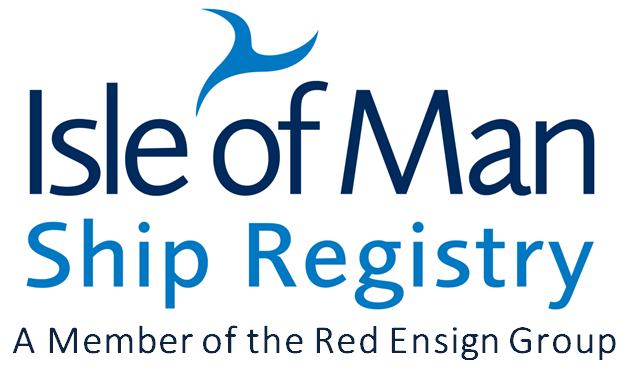As the world commemorates World Day for Health and Safety at Work on April 28th, the Isle of Man Ship Registry (IOMSR) are making strides in enhancing safety standards within the global shipping sector and its shore-based support structures. This article delves into the registry's regulatory input and efforts to bring about meaningful change.
Regulatory controls in place are crucial for ensuring safety in the shipping industry. The International Convention for the Safety of Life at Sea (SOLAS) is the most important treaty concerning the safety of merchant shipping. It sets minimum safety standards for the construction, equipment, and operation of ships. Flag States (including the Isle of Man) are responsible for ensuring that ships under their flag comply with SOLAS requirements.
Ashore, the Health and Safety Executive (HSE) or its equivalent regulatory body oversees workplace safety. These bodies work in partnership with local authorities to inspect, investigate, and enforce health and safety regulations.
InterManager has been compiling statistical information from numerous sources regarding deaths directly related to shipping operational activity. From 1996 to April 1st 2025, a total of 358 people have lost their lives to "enclosed space" accidents. Of these, 50% occurred in the cargo hold and accessway areas, and 38.9% of those happened to just three levels of personnel. These statistics underscore the urgent need for enhanced safety measures.

IOMSR are collaborating with the Oil Companies International Marine Forum (OCIMF) to address enclosed space entry safety holistically. OCIMF has been coordinating workshops that leverage the collective industry experience of participants to guide actionable points. This collaborative effort aims to develop comprehensive safety protocols and best practices that can be adopted industry-wide.
Several actionable points have been identified as a result of this industry knowledge and experience:
- Deeper Understanding of the toxic hazards of high concentrations of CO2 versus the widely perceived asphyxiant hazard only.
- The lack of standardized warning signs specific to enclosed spaces on ships.
- Proposed revisions to resolution A.1050(27) (enclosed space entry guidelines from IMO) aim to enhance the safety of personnel entering enclosed spaceson board ships.
- There is a missing requirement for enclosed space refresher training at management level ranks on board ships.
- MSC.1/Circ.1477 (guidance on the selection of gas monitoring equipment) require to be updated as they make no specific mention regarding CO2 hazards.
- A casualty report from one of our own vessels highlighted significant issues with language barriers between shore workers and crew, lack of effective supervision and insufficient personal protective equipment being provided to them.
Effective supervision is crucial for ensuring safety in enclosed spaces. It should be clearly established who must provide supervision of potentially affected parties. Safety management systems should have robust risk assessment processes to produce effective operational procedures, carried out by staff knowledgeable in the process being assessed. As the phrase goes, "a casualty is a failed risk assessment" – you can't hope to mitigate a risk you haven't been able to consider due to insufficient knowledge or poor operational controls.
In connection with cargoes and their impact on enclosed space hazards, we can improve the risk assessment process by standardizing what needs to be assessed and the equipment, processes, and procedures required to achieve the safest end result.
Six years ago, the IOMSR introduced a Technical Advisory Notice TAN 007-19 as a form of guidance that operators could adapt to their own trade.
Data collection and timely reporting unfortunately often don't go hand in hand.
Three years ago one of our registered bulk carriers had an incident, the report carried out on our behalf was published this year, as a result TAN 005-24 was introduced to further enhance safety measures, through establishing clearer criteria needing to be assessed by safety management companies in relation to cargoes and their potential risk/hazards such as:
- Clarifying the necessary equipment and procedures to ensure safe operations, including proper handling, storage, and monitoring of hazardous cargoes and the spaces surrounding them.
- Ensuring that all personnel involved are adequately trained and knowledgeable about the risks and the measures needed to mitigate them.
- Having robust processes in place to consistently assess gas risks presented by cargoes and having effective mitigation for those risks
Since the Bulk Carrier incident, several important issues were identified, however 15 more stevedores lost their lives since the incident occurred.
These individuals - often the main wage earners for their families, simply went to their place of work, where it should have been as safe as it can be for them to work, but partners and children have to deal with the fact they didn’t come home from work that night.
OCIMF and collaborating bodies are working towards methods of increasing wider understanding, standardizing safety signage, addressing barriers to languages in foreign ports, and changes to rules with the ultimate goal of reducing the number of lives lost.
358 deaths – in the period 1996 ~ 01/04/2025
38.9% (139) belong to only three personnel groups:
- Chief Officer,
- Able Seamen and
- Stevedores
All of these ranks are extensively involved with cargo operations.
83% (297) occurred on only three ship types:
- Bulk Carriers (41%),
- Tankers (23%) and
- General Cargo ships (19%)
Many cargoes are capable of generating gas hazards! As an Industry we need to do more!
